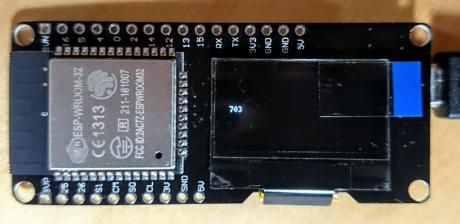Those ESP modules and Espruino are a very attractive combination. The latest one I ordered is particularily nice: ESP32 with plenty RAM (512 KB), 2 cores, with a 128×64 pixel OLED, plus Espruino. Sweet!
./esptool.py --chip esp32 --port /dev/ttyUSB0 --baud 921600 \ --before default_reset --after hard_reset write_flash \ -z --flash_mode qio --flash_freq 80m --flash_size detect \ 0x1000 /tmp/espruino_1v92.71_esp32/bootloader.bin \ 0x8000 /tmp/espruino_1v92.71_esp32/partitions_espruino.bin \ 0x10000 ../Espruino/espruino_esp32.bin
The bootloader.bin and partitions_espruino.bin come from the Travis cutting-edge builds. The binary I compiled from https://github.com/espruino/Espruino
Connecting via Web IDE works usually. In case of problems, use minicom to connect (115200 baud). Pushing the reset button always works. At this point the Web IDE will connect too.
Uploading code via Web IDE works. 100% reliable as far as I can say. But I wanted a command line uploads to do things like TypeScript and use make or Jenkins for build, test, upload cycles.
https://www.npmjs.com/package/espruino is a NPM modules for NodeJS which makes this possible. However direct uploads via serial port (/dev/ttyUSB0) does not work reliable (<10% success). Turns out there’s a better way:
#!/bin/bash # Usage: uploadesp.sh JAVASCRIPT_FILE.js IP_OF_ESP32 TMP=$(mktemp) espruino -n -o $TMP $1 nc $2 23 < $TMP >/dev/null
That’s 100% working so far and much, much faster to upload. Note that the espruino command (actually espruino-cli.js) needs some changes to recognize the -n option to not talk to the serial interface.
Update: dio and 40MHz works fine too.
